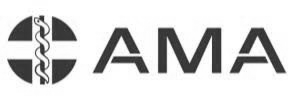Initial Investigations
What is an Initial Investigation?
An initial Muskuloskeletal Investigation is a key part of your diagnostic process. It provides information on which to base further investigations and diagnosis.
The review includes a physical exam of your general health with a specific focus on your general health’s impact on musculoskeletal performance
The purpose of a Full Clinical Review is to look at any:
- Examine your Joint, Tendon, Muscle or Bursa problems,
- Evaluate your Biomechanics and Gait,
- Review your Muscle, Fat Ratios and Lifestyle, and
- Consider movement and aging issues.
The review is individualised based on the patients
- Personal history and type, and
- Contextual objectives and stage.
Benefits of a Full Clinical Review
Musculoskeletal pain is easily the most common patient seeing their doctor. By the time we get to 50, our musculoskeletal system has performed many millions of functions. A Full Clinical Review conducted by you doctor can detect issues early or help manage and resolve issues before they get worse.
So, having a Clinical Review is an important part of body maintenance and can work as part of a:
- Health planning process, and as
- Early detection for any musculoskeletal issues.
What to Expect from a Full Clinical Review
Full Medical History
The first step is to take a full medical history. This would include questions around:
- Current symptoms and what if any activities aggravate your condition, or how injury was sustained,
- General health and relevant medical history,
- Any sports participation and activities,
- Lifestyle, diet and exercise,
- Determine any related former conditions diseases and treatments,
- Record health metrics (weight, mobility, blood pressure, heart rate, etc)
- Confirm medications, past and present
- Record habits, diet, exercise and other related actions
- Understand any risk factors or related complications or links
Where there is a specific health issue, further questions around this would be likely as well as
- what prevention or lifestyle modifications,
- movement restrictions and
- what activities aggravate this condition.
Physical examination
After the patient has removed all clothing from the affected area, our surgeon will look at the joints or bones, to see whether any swelling or discolouration is visible.
Following this, our surgeon can examine the affected areas ability to move and the range and weight-bearing possibilities of the region affected.
The physical examination should establish the nature, location and size of any abnormalities found either on visual inspection or palpation.
As part of a Clinical Review, your Biomechanics and Gait would be examined. The doctor may
- Examine the affected area,
- Evaluate any swelling, pain, bruising or other features, etc
- Determine impact of condition such as range or motion, pain, diet, lifestyle,
- Record levels or severity of any symptoms
Medical Imaging
After the physical examination and where required, your doctor may require medical imaging such as:
- X-Ray,
- CT-Scan,
- Ultrasound, or
- Magnetic Resonance Imaging (MRI)
to help rule out or confirm a specific condition and support the clinical examination.
A comprehensive evaluation will help your doctor eliminate various possibilities, arrive at a diagnosis, and recommend a treatment plan.
Further Assessments
Depending on the initial Clinical Review your doctor may ask for various posture changes to assess sizes, shapes and movement of different parts of the body.
Your doctor is looking for:
- changes or differences in tone, shape or movement,
- areas of fullness or thickness,
- differences in skin colour, (redness),
- differences in the texture or rashes,
- dimpling, visible lumps or swelling of the skin
- differences in temperature or increased skin warmth, and
- Any observed lesions.
What Happens if an Abnormality is Found
At the end of a review and subject to further tests, your doctor will talk to you about anything that is found and let you know if further diagnostic tests are required.
This initial summary is typically followed by a detailed Clinical Review Report. This report outlines:
- Assessment Summary (Clinical, Personal, Contextual)
- Multi-Discipline Inputs
- Review any Findings (type severity)
- Treatment Stages (rehab, development etc)
- Planning & Case Management





